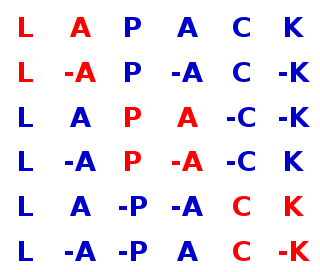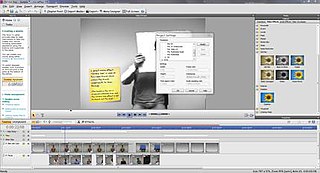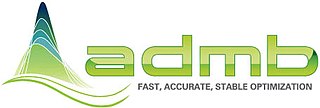
Numerical analysis is the study of algorithms that use numerical approximation for the problems of mathematical analysis. Numerical analysis naturally finds application in all fields of engineering and the physical sciences, but in the 21st century also the life sciences, social sciences, medicine, business and even the arts have adopted elements of scientific computations. The growth in computing power has revolutionized the use of realistic mathematical models in science and engineering, and subtle numerical analysis is required to implement these detailed models of the world. For example, ordinary differential equations appear in celestial mechanics ; numerical linear algebra is important for data analysis; stochastic differential equations and Markov chains are essential in simulating living cells for medicine and biology.
Time management is the process of planning and exercising conscious control of time spent on specific activities, especially to increase effectiveness, efficiency, and productivity. It involves a juggling act of various demands upon a person relating to work, social life, family, hobbies, personal interests and commitments with the finiteness of time. Using time effectively gives the person "choice" on spending/managing activities at their own time and expediency. Time management may be aided by a range of skills, tools, and techniques used to manage time when accomplishing specific tasks, projects, and goals complying with a due date. Initially, time management referred to just business or work activities, but eventually the term broadened to include personal activities as well. A time management system is a designed combination of processes, tools, techniques, and methods. Time management is usually a necessity in any project development as it determines the project completion time and scope. It is also important to understand that both technical and structural differences in time management exist due to variations in cultural concepts of time.

A wiki is a hypertext publication collaboratively edited and managed by its own audience directly using a web browser. A typical wiki contains multiple pages for the subjects or scope of the project and may be either open to the public or limited to use within an organization for maintaining its internal knowledge base.

R is a programming language and free software environment for statistical computing and graphics supported by the R Foundation for Statistical Computing. The R language is widely used among statisticians and data miners for developing statistical software and data analysis. Polls, data mining surveys, and studies of scholarly literature databases show substantial increases in popularity; as of September 2020, R ranks 9th in the TIOBE index, a measure of popularity of programming languages.

In systems engineering and software engineering, requirements analysis focuses on the tasks that determine the needs or conditions to meet the new or altered product or project, taking account of the possibly conflicting requirements of the various stakeholders, analyzing, documenting, validating and managing software or system requirements.

Curve fitting is the process of constructing a curve, or mathematical function, that has the best fit to a series of data points, possibly subject to constraints. Curve fitting can involve either interpolation, where an exact fit to the data is required, or smoothing, in which a "smooth" function is constructed that approximately fits the data. A related topic is regression analysis, which focuses more on questions of statistical inference such as how much uncertainty is present in a curve that is fit to data observed with random errors. Fitted curves can be used as an aid for data visualization, to infer values of a function where no data are available, and to summarize the relationships among two or more variables. Extrapolation refers to the use of a fitted curve beyond the range of the observed data, and is subject to a degree of uncertainty since it may reflect the method used to construct the curve as much as it reflects the observed data.
Design for Six Sigma (DFSS) is an Engineering design process, business process management method related to traditional Six Sigma. It is used in many industries, like finance, marketing, basic engineering, process industries, waste management, and electronics. It is based on the use of statistical tools like linear regression and enables empirical research similar to that performed in other fields, such as social science. While the tools and order used in Six Sigma require a process to be in place and functioning, DFSS has the objective of determining the needs of customers and the business, and driving those needs into the product solution so created. DFSS is relevant for relatively simple items / systems. It is used for product or process design in contrast with process improvement. Measurement is the most important part of most Six Sigma or DFSS tools, but whereas in Six Sigma measurements are made from an existing process, DFSS focuses on gaining a deep insight into customer needs and using these to inform every design decision and trade-off.

LAPACK is a standard software library for numerical linear algebra. It provides routines for solving systems of linear equations and linear least squares, eigenvalue problems, and singular value decomposition. It also includes routines to implement the associated matrix factorizations such as LU, QR, Cholesky and Schur decomposition. LAPACK was originally written in FORTRAN 77, but moved to Fortran 90 in version 3.2 (2008). The routines handle both real and complex matrices in both single and double precision.

VEST ciphers are a set of families of general-purpose hardware-dedicated ciphers that support single pass authenticated encryption and can operate as collision-resistant hash functions designed by Sean O'Neil, Benjamin Gittins and Howard Landman. VEST cannot be implemented efficiently in software.
Goal programming is a branch of multiobjective optimization, which in turn is a branch of multi-criteria decision analysis (MCDA). It can be thought of as an extension or generalisation of linear programming to handle multiple, normally conflicting objective measures. Each of these measures is given a goal or target value to be achieved. Deviations are measured from these goals both above and below the target. Unwanted deviations from this set of target values are then minimised in an achievement function. This can be a vector or a weighted sum dependent on the goal programming variant used. As satisfaction of the target is deemed to satisfy the decision maker(s), an underlying satisficing philosophy is assumed. Goal programming is used to perform three types of analysis:
- Determine the required resources to achieve a desired set of objectives.
- Determine the degree of attainment of the goals with the available resources.
- Providing the best satisfying solution under a varying amount of resources and priorities of the goals.
HC-256 is a stream cipher designed to provide bulk encryption in software at high speeds while permitting strong confidence in its security. A 128-bit variant was submitted as an eSTREAM cipher candidate and has been selected as one of the four final contestants in the software profile.

Arduino is an open-source hardware and software company, project and user community that designs and manufactures single-board microcontrollers and microcontroller kits for building digital devices. Its hardware products are licensed under a CC-BY-SA license, while software is licensed under the GNU Lesser General Public License (LGPL) or the GNU General Public License (GPL), permitting the manufacture of Arduino boards and software distribution by anyone. Arduino boards are available commercially from the official website or through authorized distributors.

Serif MoviePlus was a non-linear video editor created by Serif Europe that allowed both professional and home users to edit digital video and digital images.

The FEniCS Project is a collection of free and open-source software components with the common goal to enable automated solution of differential equations. The components provide scientific computing tools for working with computational meshes, finite-element variational formulations of ordinary and partial differential equations, and numerical linear algebra.

ADMB or AD Model Builder is a free and open source software suite for non-linear statistical modeling. It was created by David Fournier and now being developed by the ADMB Project, a creation of the non-profit ADMB Foundation. The "AD" in AD Model Builder refers to the automatic differentiation capabilities that come from the AUTODIF Library, a C++ language extension also created by David Fournier, which implements reverse mode automatic differentiation. A related software package, ADMB-RE, provides additional support for modeling random effects.

ALGLIB is a cross-platform open source numerical analysis and data processing library. It can be used from several programming languages.
OpenNN is a software library written in the C++ programming language which implements neural networks, a main area of deep learning research. The library is open-source, licensed under the GNU Lesser General Public License.
MINOS is a Fortran software package for solving linear and nonlinear mathematical optimization problems. MINOS may be used for linear programming, quadratic programming, and more general objective functions and constraints, and for finding a feasible point for a set of linear or nonlinear equalities and inequalities.
Convex Over and Under ENvelopes for Nonlinear Estimation (Couenne) is an open-source library for solving global optimization problems, also termed mixed integer nonlinear optimization problems. A global optimization problem requires to minimize a function, called objective function, subject to a set of constraints. Both the objective function and the constraints might be nonlinear and nonconvex. For solving these problems, Couenne uses a reformulation procedure and provides a linear programming approximation of any nonconvex optimization problem.











